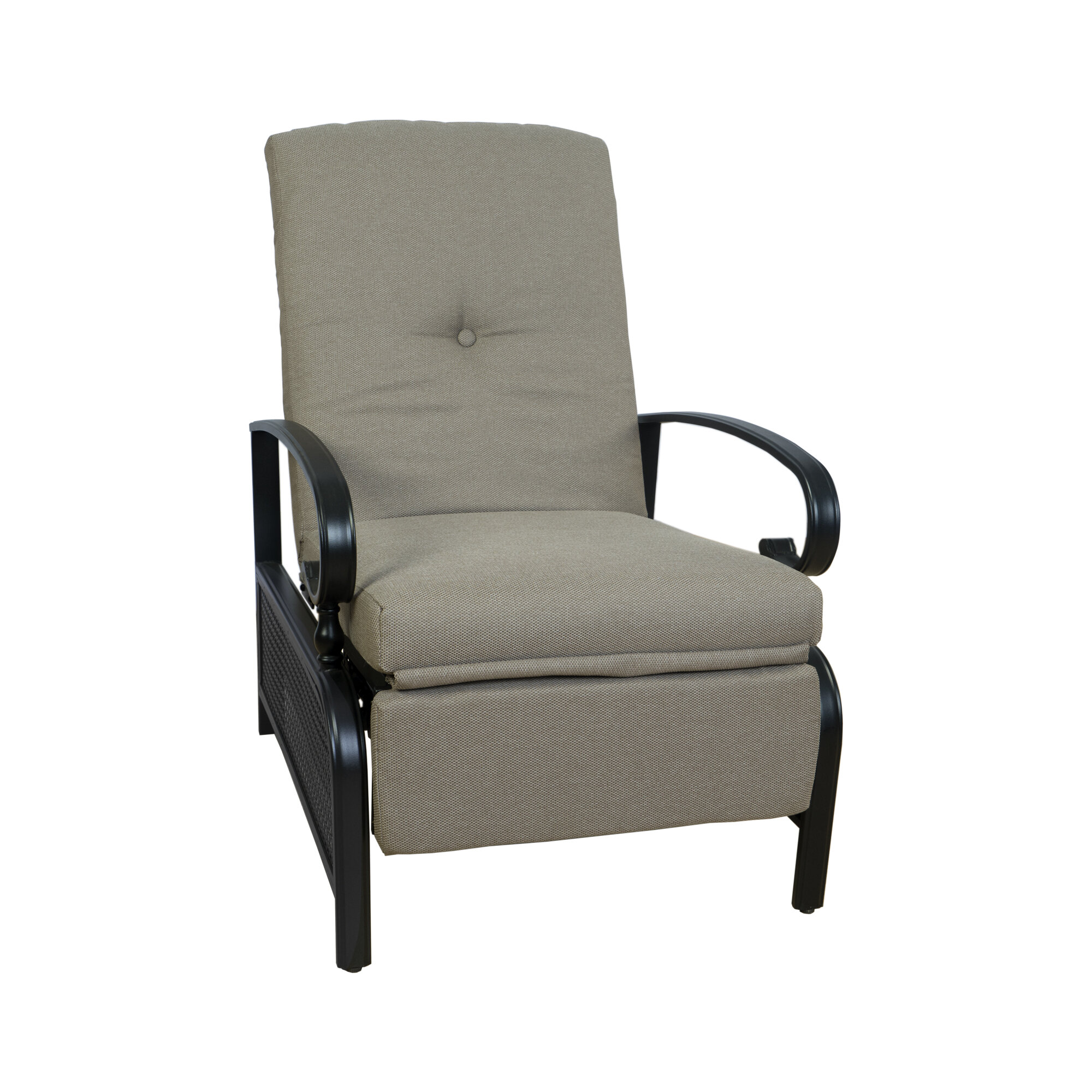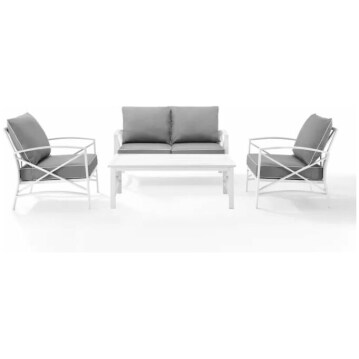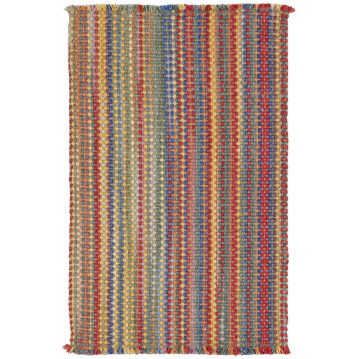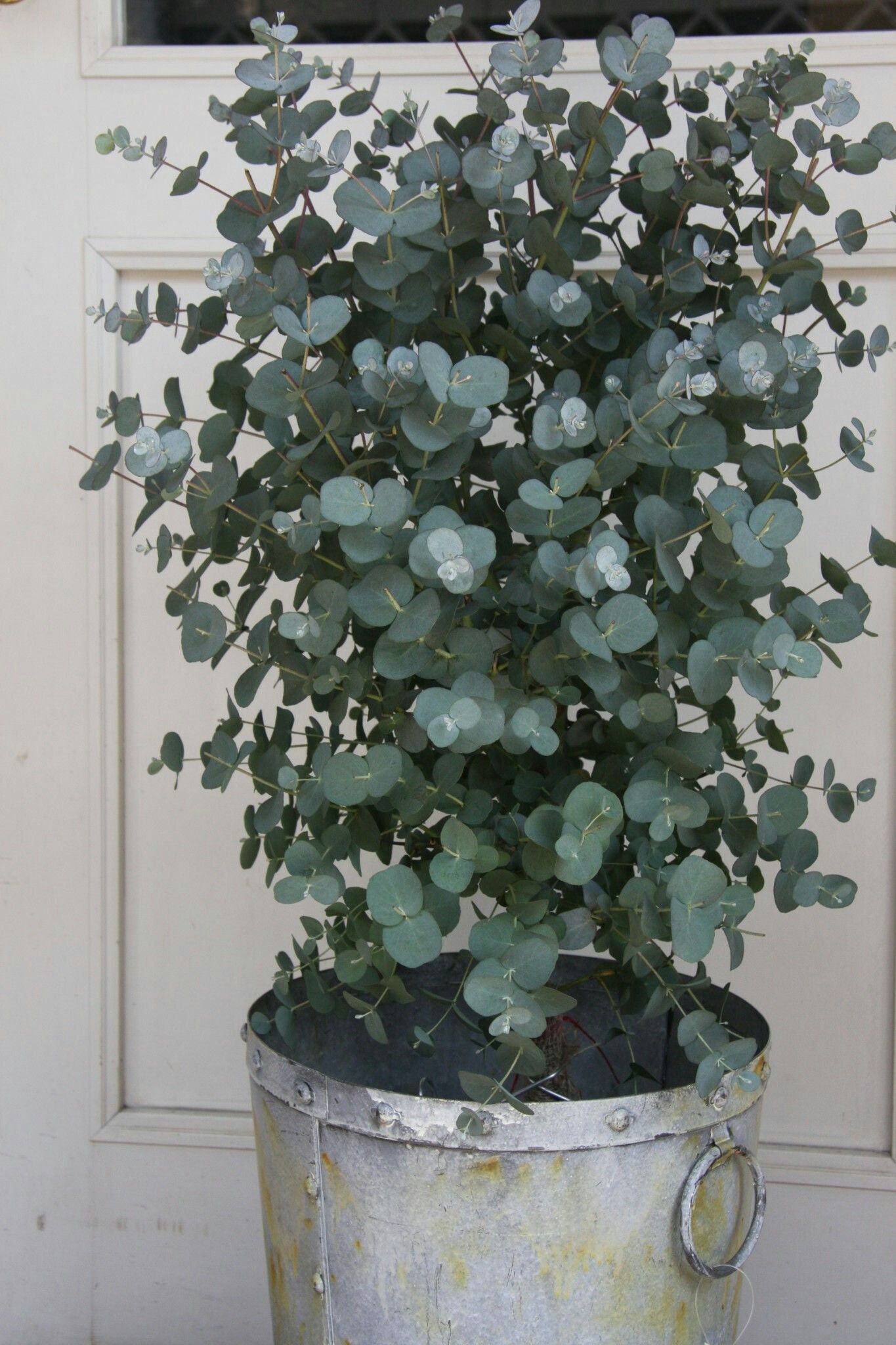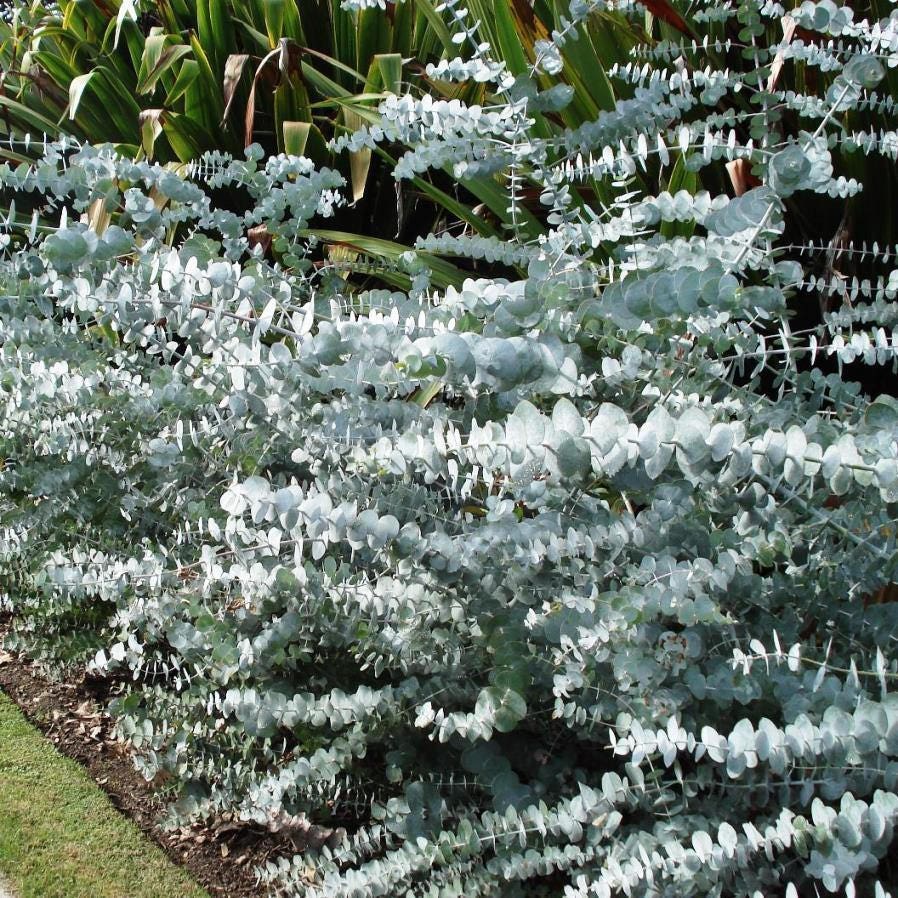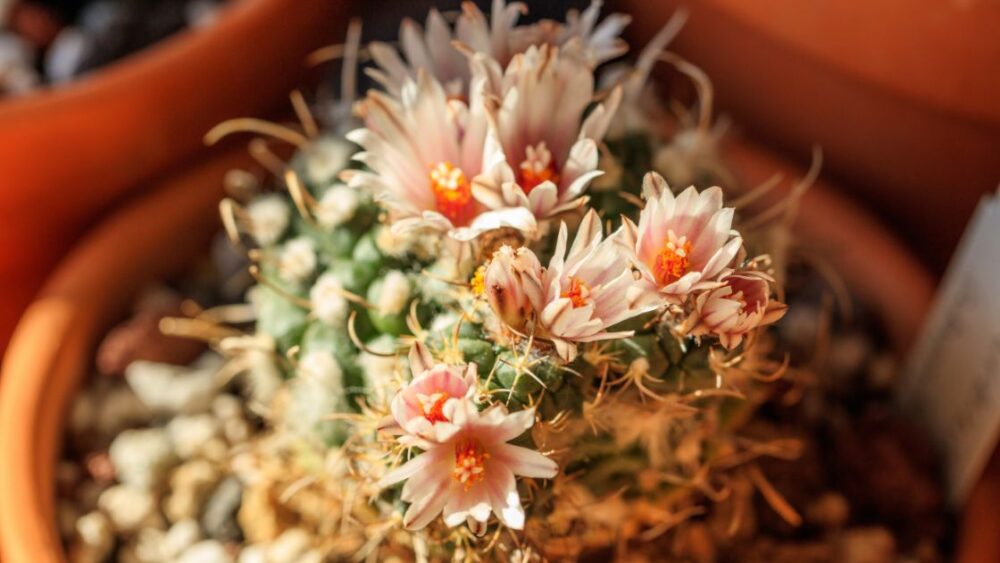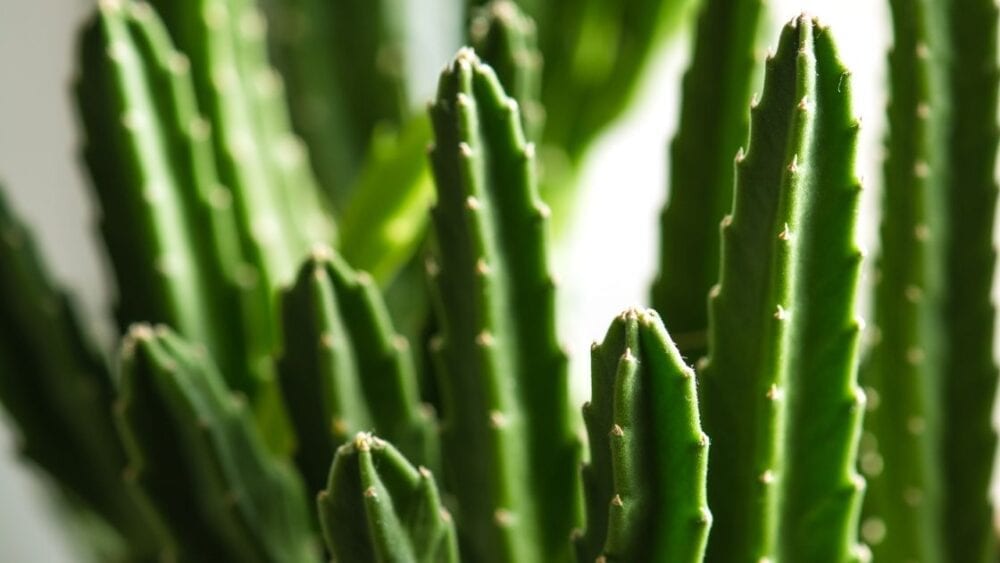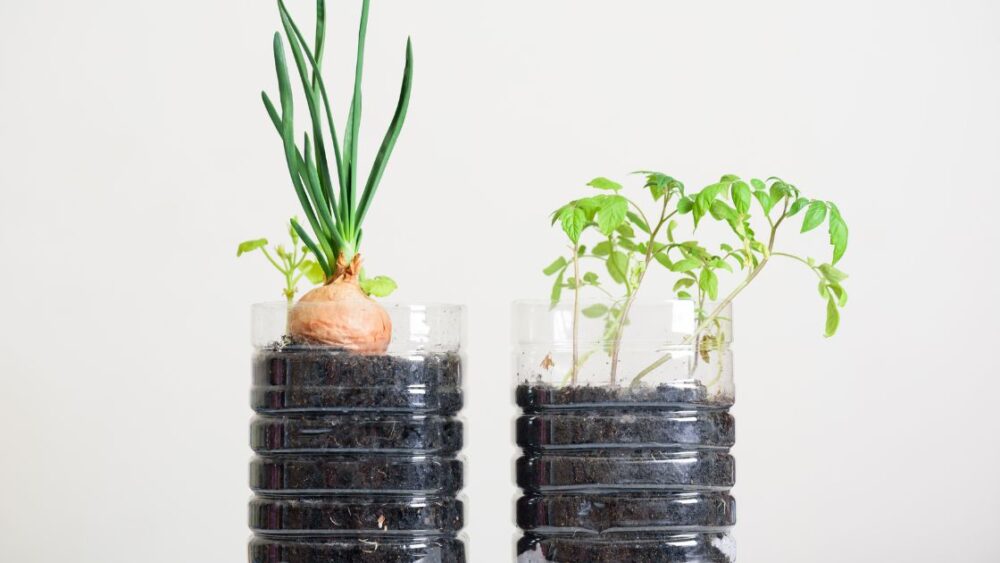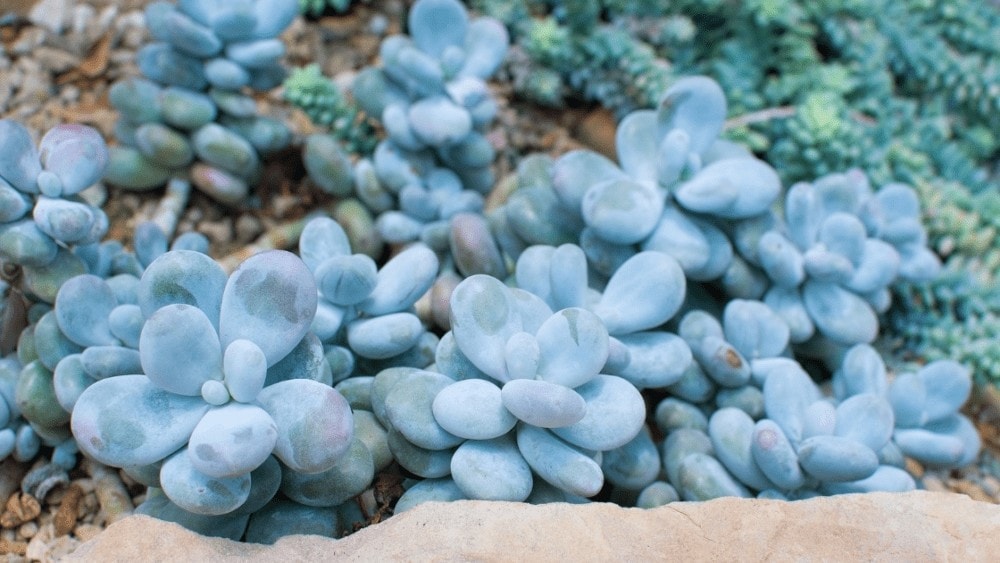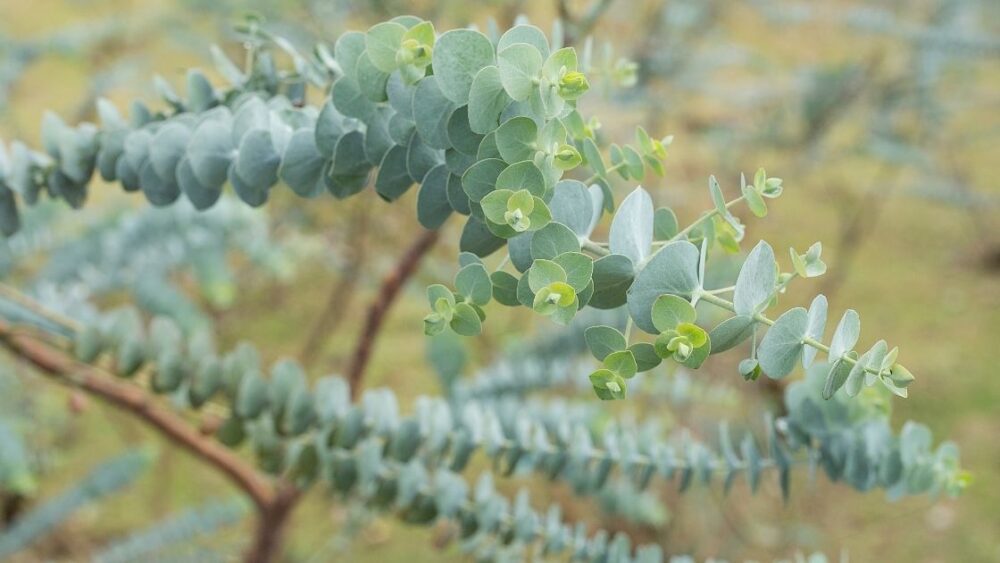
Eucalyptus pulverulenta ”Baby blue’ is an extremely popular, small eucalyptus tree (or a shrub, depending on how you prune it). It has ornamental value, but is also grown for its fragrance, tendency to attract bees and other insects and for its use in floral arrangements. In the following paragraphs, we’ll go over the growth requirements of this plant and we’ll see what problems you are likely to encounter and how to fix them. Let’s get started!
Baby Blue Eucalyptus – Description, Origin & Differences from Other Eucalyptus Species
The ‘Baby Blue’ selection was created from a wild, dwarf specimen of Eucalyptus pulverulenta around 50 years ago. All Eucalyptus pulverulenta species originate exclusively from South Australia. ‘Baby blue’ quickly became one of the most important eucalyptus cultivars – it is still cultivated commercially for the production of cut branches for the floral industry.
Depending on how you prune this plant, it can take on a lot of forms – it can become a tall tree, a compact bush, or even look like a small fern. ‘Baby blue’ is one of the few Eucalyptus varieties that puts out only small, rounded (‘baby’) leaves – other species posses those leaves only while they’re very young.
Browse our Affiliate Products
Eucalyptus pulverulenta ‘Baby Blue’ Care Guide
This eucalyptus variety has been cultivated commercially for almost 50 years, so we know exactly what its optimum growing conditions are. This is not a difficult plant to grow and it’s quite hardy, being able to survive temperatures down to 15F (-9C).
How quickly does it grow and how big can it get?
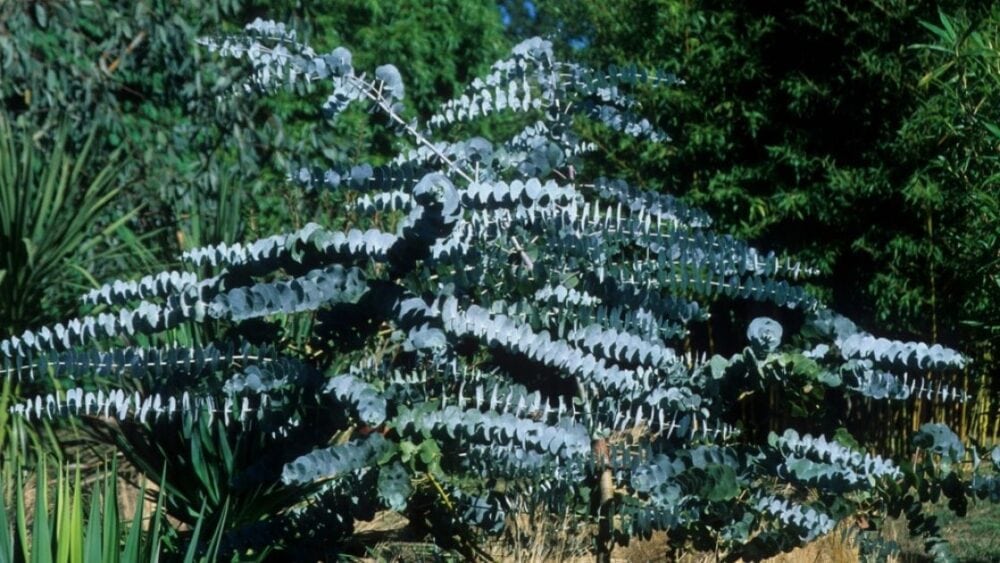
Eucalyptus pulverulenta has the potential to be an extremely fast-growing plant. The Eucalyptus genus as a whole is known to be able to sustain a growth rate of up to 12 feet per year.
This, however, applies to large, mature trees and is highly dependent on the soil nutrient availability and climate. Most gardeners will find the ‘Baby blue’ variety to grow at a rate of around 1 to 3 feet per year. Small seedlings can sometimes grow very slowly, especially in poor soil.
Fertilization and plenty of direct sunlight will greatly speed things up. The maximum size of this Eucalyptus cultivar is around 10 feet, with 5 ft. being average and 30 feet being possible in climates that don’t experience sub-freezing temperatures.
Can it be grown indoors? What climate can it tolerate outdoors?
Even though this tree comes from South Australia, it can be surprisingly frost tolerant. However, as soon as the temperature drops to a few degrees below freezing, a certain percentage of the cells of this Eucalyptus will start to die – at 8F (-13C), around 50% of the cells in the upper foliage will be irreversibly damaged.
This stunts the growth of the tree and prevents it from growing very tall in most areas of the northern hemisphere.
Indoor growing on a windowsill is possible, but only on a very small scale – this is usually done for the fragrance of the leaves – even a small Eucalyptus plant can disperse its pleasant scent across a big living room.
For more information on fragrant gardens, check out this article. Plants That Work Well for A Fragrance Garden.
Sunlight requirements
Direct sunlight is required for proper growth and maximum fragrance, as well as for the leaves to develop their bluish tinge. This is a plant that originates from close to the equator, so it doesn’t get sunburned easily.
However, nursery-purchased specimens that have only experienced greenhouse-filtered sunlight may occasionally need a week or two of gradual acclimation before they manufacture the necessary UV-protective compounds.
What type of soil does this Eucalyptus variety require?
Eucalyptus is not a plant with strict pH requirements and can grow in all types of soil. A well-draining, loamy, rich soil will sustain the fastest growth and will make the shrub more resistant to overwatering – this is especially true for potted shrubs.
Fertilization regimen
A soil that is poor in nutrients is often the culprit behind slow, stunted growth in this Eucalyptus variety. This is especially problematic for seedlings, which may sometimes remain only a few inches tall for their first year. Careful fertilization with steadily increasing concentrations is recommended.
Keep a close eye for any symptoms of fertilizer burn (usually leaf tip browning or unexplained yellowing) and if you notice any, immediately flush with pure water and stop the fertilization. Planted outdoors, Eucalyptus ‘Baby Blue’ doesn’t require much fertilizer, as the deep roots can usually find all the nitrogen the plant needs.
Usually, a monthly application of a balanced fertilizer results in the fastest growth.
Proper watering frequency and amount
Potted Eucalyptus should be given a short drought period in-between each watering – this will prevent root rot and will increase the oxygen availability to the roots. Tall, garden-planted specimens on the other hand are very difficult to over-water and their deep roots have access to moisture even in a seemingly arid weather.
Water once every two weeks and only if there hasn’t been any rain.
When to repot potted ‘Baby Blue’ Eucalyptus shrubs?
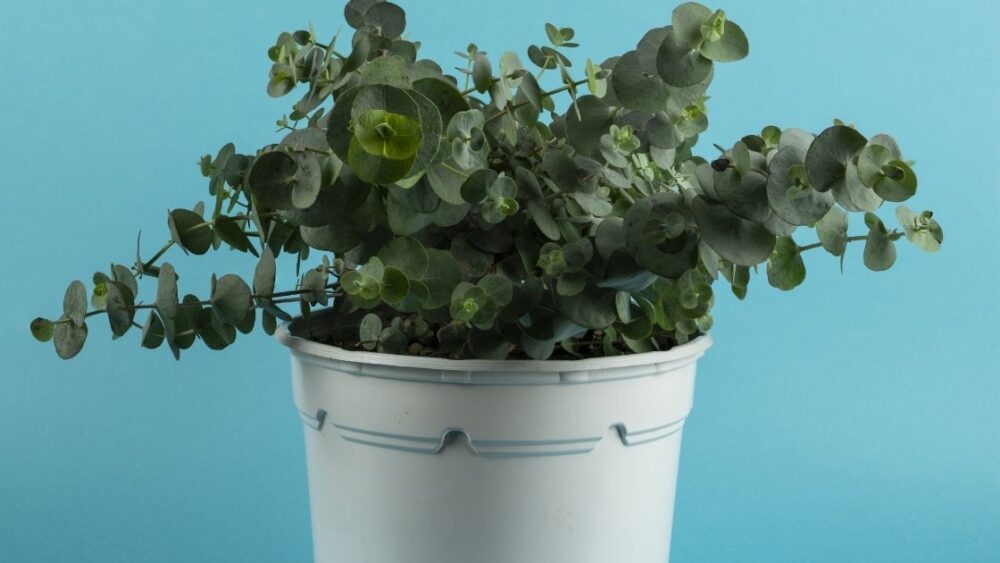
Use common sense when repotting – as soon as the pot appears vastly under-sized, repot. Often, the aerial parts of the plant will become so large and wide-spread that the pot becomes unstable and is easily tipped over.
You can replace repotting with pruning, especially if some occasional fertilization is provided to prevent the soil from becoming spent.
For more information on pots, check out this article. What is the perfect pot for my plants?
Is pruning necessary?
Pruning is almost always necessary, as this Eucalyptus variety tends to develop an uneven and sporadic growth pattern. It’s completely up to you to decide on a pruning technique – cutting off the side branches will allow the shrub to develop into a taller tree, while cutting off any top growth will force side branching and encourage bushy growth.
Cut branches can be rooted in water or in peat moss – until they root, they can serve as natural air-fresheners for your living room.
Common Problems and Solutions
Eucalyptus pulverulenta can be susceptible to all sorts of insects, molds and bacterial problems. These problems become common with colder nights and humid days – conditions, which this species is not used to in its natural habitat, but which are the norm in the northern hemisphere.
Here is a quick list of potential problems and solutions:
Insect Pests
Problem: Those are very common, especially if you’ve planted your Eucalyptus tree in a humid spot with mostly partial shade. Aphids and scale insects are the most common suspects.
Solution: Manual removal, insecticidal sprays and predatory insects are all good solutions.
Leaf Fungal and Bacterial diseases
Problem: Those can be difficult to correctly identify and treat. They include blight, powdery mildew and many others. Treatment is best focused on making the environmental conditions less suitable for the intruders.
Solution: Reducing the humidity, increasing the amount of sun the plant gets and removing the affected leaves to limit spread.
Root issues
Problem: A nightmare for even experienced gardeners, root diseases can be extremely difficult to diagnose and treat. Rhizoctonia, Phytophthora and Pythium are all potential suspects. Simple root rot can also be caused by countless other microorganisms.
Solution: The good news is that those problems almost always tend to develop due to overwatering and they often disappear on their own with reduction in soil surface moisture levels. Potted specimens can be repotted and the root system cleaned from dead tissue if you suspect a root problem.
Poor, slow growth
Solution: Consider overwatering, compacted soil, lack of soil nutrients and lack of direct sunlight as causes. If started from seed, young plants tend to develop slowly during their first few months and there is little you can do to speed this up.
Final Thoughts
Eucalyptus pulverulenta is one of the fastest growing tree species – with monthly fertilization, proper, well-draining soil and at least 6 hours of direct sun each day it can grow at a rate of around 3 feet per year. Although this is hardy tree, frosts tend to stunt and set back its growth, usually preventing it from reaching its maximum size of more than 10 feet.
